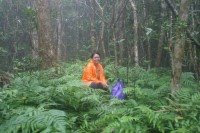
Another Milestone for Bluewater was reached when stakeholders from the island of Capul participated in crafting the Capul Island Sustainable Tourism Development Plan. The planning process utilized a participatory approach. The seminar/workshop was attended by Barangay Captains and their officers, resort owners, teachers, LGU staff, youth and representatives from other sectoral groups.

The three-day workshop was an overwhelming success. The workshop provided an opportunity for the participants to learn contemporary concepts and strategies on tourism development for small islands. Throughout the entire process facilitators introduced planning tools that made them work together in assessing tourism resources, discussing issues and concerns, and assessing their strengths, weaknessess, opportunities and threats (SWOT). They also conducted a stakeholder analysis that made them realize that an understanding of the roles of each sector in the industry is the key towards establishing a strong Partnership.
Based on the evaluation of the participants, Capul seem to be a generally safe place to be. History is the most compelling or distinct feature of the island. Any tourism product development initiative should capitalize on this unique attribute. The lighthouse, the church and other historical landmarks show the greatest drawing power. Although the lighthouse has the potential to motivate travelers to come to the island, the road needs to be improved. The quality and quantity of amenities and facilities that will address the needs of tourists will have to be increased and standards elevated.

The culture and language will enhance visitor experience and should be integrated in the overall theme of the tour packages for Capul. The Capul Island Sustainable Tourism Plan highlights three major components - product development, social preparation and promotions and marketing. Participants agree that a balanced approach to tourism development is the best way to preserve history, culture and the natural environemtent of the island while optimizing economic bendfit.

Capul is also endowed with natural attractions. Beto cave in Barangay Sawang is a frequently visited site. Although workshop participants agree that it may need rehabilitation due to the numerous grafitti that had been placed by irresponsbile visitors that decided to immortalize themselves. All around the island are coves and white sand beaches that are washed by the currents of the San Berbardino. The flushing of the water creates emerald green waters that is home to a myriad of marine life forms. Selected sites can be quite excellent for snorkeling but may not be safe at certain times of the day due to the swift current.






